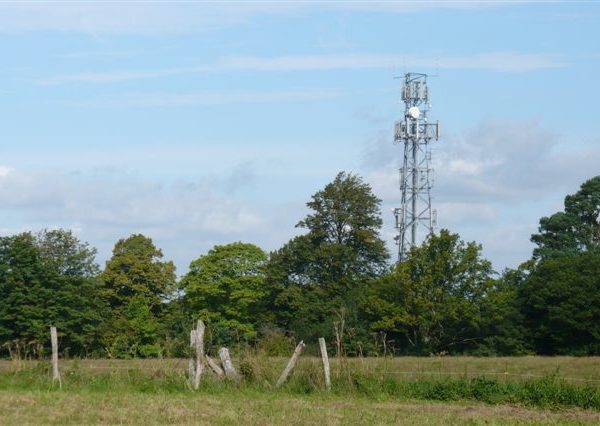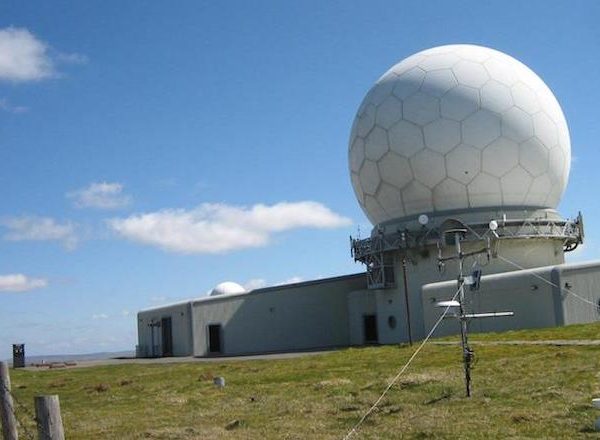When developing your wind development, investigating wireless communication constraints may not be the first thing you look to assess but, as you approach submitting the planning application for your scheme, it is worth bearing in mind the time scale which are involved in an assessment of this kind.
Wind turbines have the potential to affect wireless link infrastructure such as transmitting masts or point-to-point microwave and UHF (Ultra High Frequency) links.
A typical communications mast with a number of radio-communications dishes attached can be seen to the right.

How can Radio-communication signals be affected by turbines?
The signals broadcast can be affected by wind turbines in a number of ways, including:
- Physically blocking the signal broadcast by the link ends;
- Diffraction effects caused by the rotor blades intercepting or passing close to the exclusion zone which exists around the link bore sight (the straight line which ‘connects’ the link dishes);
- Nearfield interference effects which can occur when a turbine is sited near to a broadcasting mast;
- Reflections of the signal from the turbine to the receiver (a concern for non-point to point UHF links such as those operated by the JRC).
What should you do?
1. Begin consultation with communication stakeholders
Your first step toward assessing the impact is to consult with the communication stakeholders. It can take weeks (and in some cases even longer) just to obtain the link information, some of which can be withheld by the operator for security reasons. We would recommend allowing approximately 4 weeks minimum for these responses to be received.
2. Assess the impact of your development
After receiving the most up to date communications infrastructure information the next step will be to assess the impact of your proposed development upon the identified links and masts in the area. This can be undertaken in the form of a desk based report, we call this a Communications Impact Assessment. It can be coupled with a site survey and further analysis if required.
It is worth noting that each stakeholder has different safeguarding criteria for their communications infrastructure however Pager Power uses the JRC and industry standard Ofcom guidelines (where applicable) as a basis for the assessment.
3. Negotiate mitigation (if needed)
Once an impact assessment has been undertaken, you will know whether your proposed wind project is likely to infringe upon the exclusion zones of the link infrastructure. If an infringement has been confirmed and other constraints exist which limit the positioning of the turbine in question, then it is likely that the mitigation will be required to alleviate any concerns. Putting together an appropriate mitigation scheme is the next step.
Negotiating a suitable mitigation schemes can take months and that is if mitigation is even deemed acceptable for your site. This can range from re-routing the affected link or the installation of a leased line to name just two. Each stakeholder has preferred mitigation techniques which are often in line with their existing infrastructure in the surrounding area. Mitigation can cost in the regions of hundreds of thousands of pounds as a worst case however in most cases a simpler and often cheaper alternative is available.
What can we do to help?
Pager Power can consult with the link operators, assess the impact, identify potential mitigation options and assist with mitigation talks. Get in touch with us to find out more but bear in mind the above time scales which may be involved when developing your wind turbine project.


